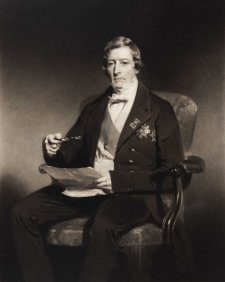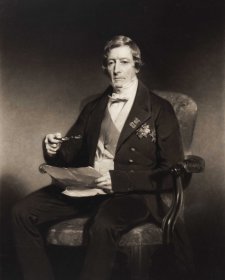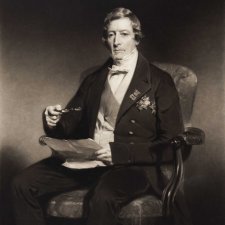- About us
- Support the Gallery
- Venue hire
- Publications
- Research library
- Organisation chart
- Employment
- Contact us
- Make a booking
- Onsite programs
- Online programs
- School visit information
- Learning resources
- Little Darlings
- Professional learning
Sir Thomas Mackdougall Brisbane (1773–1860), colonial governor and astronomer, was born into an aristocratic Scottish family and entered the army at sixteen. Advancing to the rank of lieutenant and then captain, Brisbane served in Britain, Europe and the West Indies, eventually achieving the rank of Brigadier-General in 1812 and receiving a knighthood in 1817. On the advice of his friend the Duke of Wellington, Brisbane was appointed governor of New South Wales in November 1820 and arrived in Sydney late the following year. As governor, Brisbane was mainly occupied by land and convict matters. But he also introduced economic and currency reforms, established a supreme court and opposed censorship of the press; and as the first patron of the New South Wales Agricultural Society oversaw experiments with crops such as tobacco, cotton, coffee and flax. During his governorship, the limits of settlement were extended considerably, most notably through his ordering the establishment of a penal outpost at Moreton Bay, achieved in 1824 at a site on the river that John Oxley had explored and named after Brisbane the previous year. Brisbane had been elected a fellow of the Royal Society in 1812 for his contributions to navigation and astronomy, and consequently encouraged similar pursuits in the colony, building an observatory in the grounds of Government House at Parramatta. Described by Sir John Herschel as the ‘founder of Australian science’, Brisbane continued his scientific work after his return to Scotland, receiving the gold medal of the Astronomical Society in 1828 and ultimately cataloguing more than 7,000 stars. Engraver Frederick Bromley (active 1832-1870) was from a family of printmakers active in Britain for much of the nineteenth century. Published in 1842, this work by Bromley is an engraving of a painting held in a private Scottish collection. Sir Thomas Brisbane was also the subject of what is considered Australia’s earliest officially commissioned portrait, painted by Augustus Earle in 1825–26 and now among the collection of portraits of colonial governors displayed at Government House in Sydney.
Purchased with funds provided by Ross A Field 2008
Ross A. Field (11 portraits supported)



On one level The Companion talks about the most famous and frontline Australians, but on another it tells us about ourselves.



16 August 2016
It has been suggested that Sir Thomas Brisbane’s interest in the New South Wales governorship was as attributable to his passion for astronomy as to the desirability of the position as a prestigious career move.



Visit us, learn with us, support us or work with us! Here’s a range of information about planning your visit, our history and more!